- Home Owner Bangalore -
- Home Owner Kolkata -
- Other Enquiry -
Cafe Interiors! Here's Everything You Need to Know
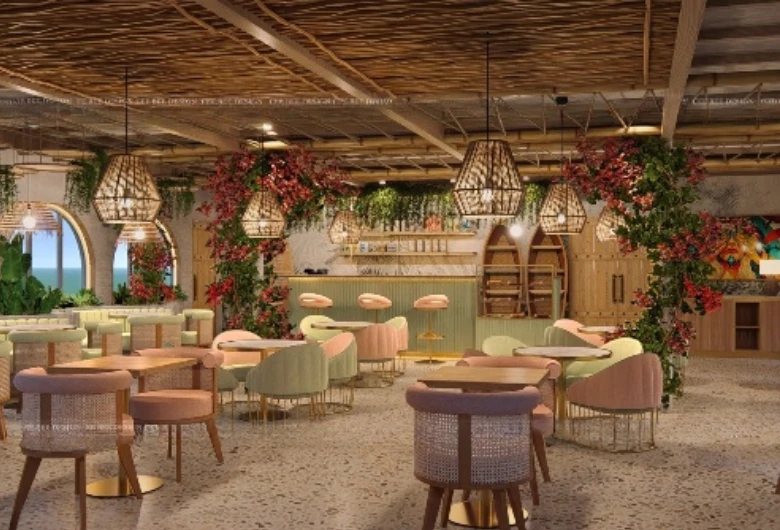
Designing a cafe isn’t just about putting chairs and tables together and designing a quote wall behind the espresso machine. It’s about creating a vibe, building a brand, and crafting a space that people come back to, not just for the coffee but for how the space makes them feel. Designers design cafes that do more than just look good…they work well, feel right, and reflect exactly what your brand is about.
First: What Even Is Cafe Interior Design?
Cafe interiors are about function + form + feel. It’s how your coffee space flows, where your customer chooses to sit, what light hits the table at 4 PM when someone is reading their book, and how your walls look in Instagram selfies. It’s the sum of big and tiny decisions that shape the experience.
Understanding the Cafe Identity
Before anything else, the interior must reflect the identity of the cafe. This starts with understanding the concept:
- Is the cafe meant to be a quick-stop takeaway space or a slow-brew boutique lounge?
- Who are the expected customers? Students, corporates, tourists, artists?
- What’s the goal..functionality, aesthetics, or a blend of both?
For example, a cafe set up near a university campus might prioritize group seating and charging points, while one in a quiet residential neighborhood may lean toward a cozy, homely feel with lounge-style seating and warm lighting.
The Different Types of Cafes (And Why It Matters)
Not all cafes are created equal. Each cafe type demands its own design logic and visual language. Design changes completely based on your cafe type:
Boutique Cafes:
Small, artsy, focused on experience and aesthetic. Think hand-picked furniture, mood lighting, and curated corners. These cafes are all about storytelling.
Book Cafe:
Quiet, calm spaces with soothing colors, lots of warm lighting, and cozy seating, perfect for reading, thinking, or long solo coffee sessions.
Themed Cafes:
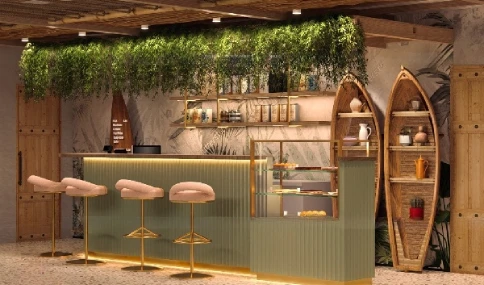
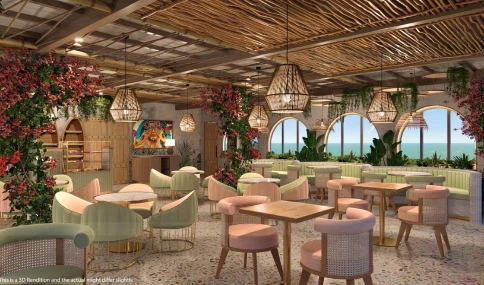
We did a pirate-themed cafe project for a client in Kolkata, inspired by the interiors of an old-world ship. The space features sail-like drapes, barrel tables, rope elements, and warm wooden finishes to create a dramatic, immersive setting. Nautical accents like ship wheels, porthole-style windows, and vintage lighting complete the adventurous vibe.
Whether it’s a flower shop cafe, a pet cafe, or a board game hangout, these spaces need a clear visual concept that aligns with the theme but doesn’t overpower the space. Everything from furniture to lighting must be on-brand.
Instagrammable Cafes:
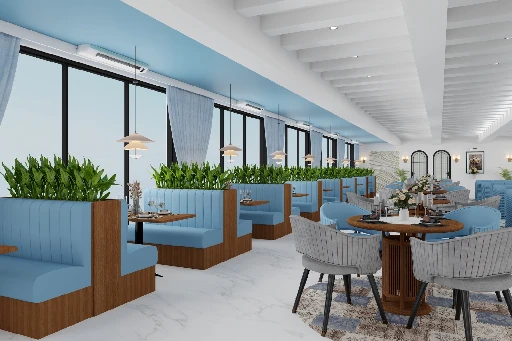
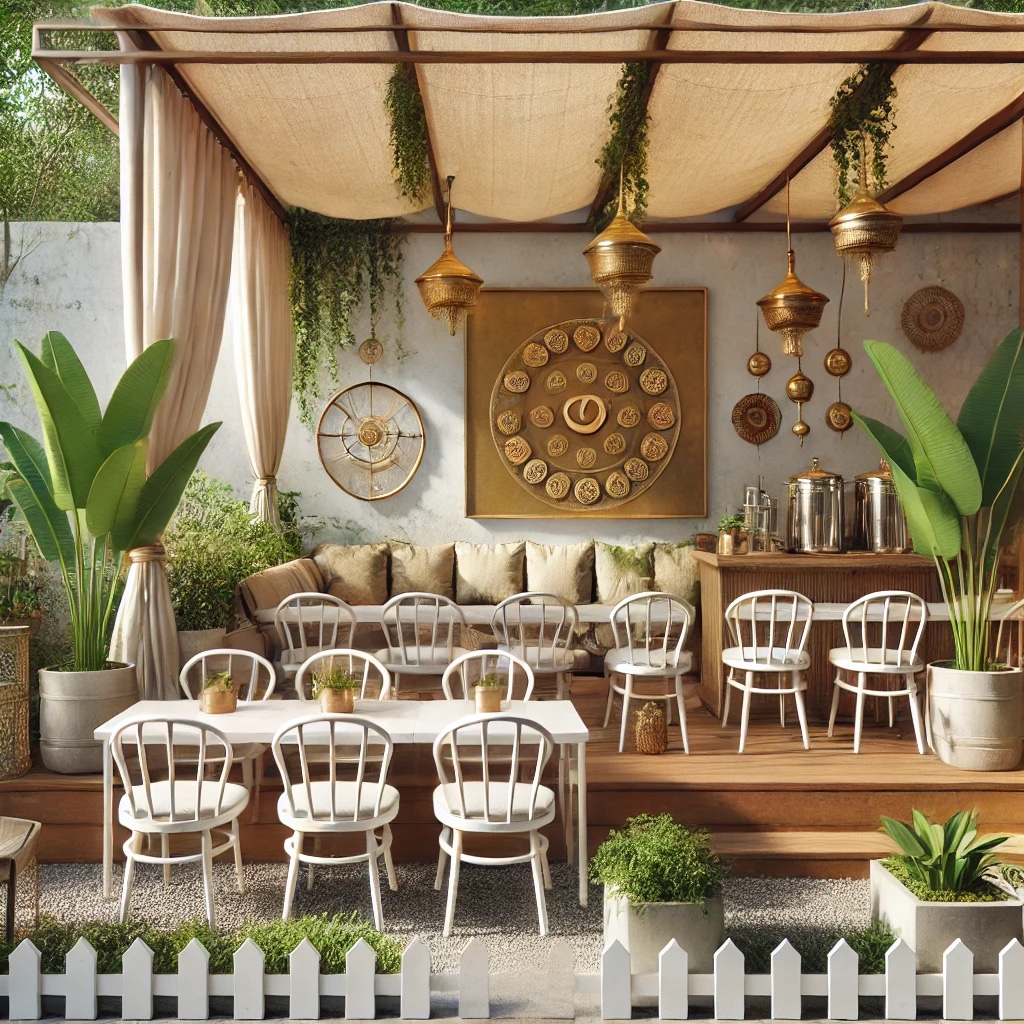
Image credit: Ceebee Design Studio
Statement walls, neon signs, unique furniture, designed for aesthetics and social media attention.
Chain or branded Cafes:
Must follow brand guidelines. Designer helps align your outlet with the brand’s SOPs while still making the space contextually relevant.
Takeaway-Focused Cafes:
Compact layouts, service-first design, efficient movement flow, but still needs a solid visual identity.
Popular Interior Styles That Work Well in Cafes
Designing a cafe also involves picking the right style that complements the brand narrative:
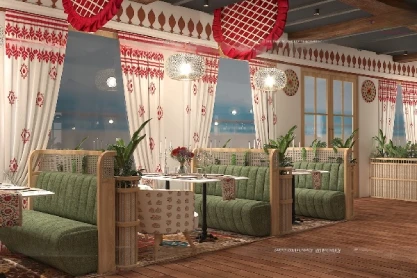
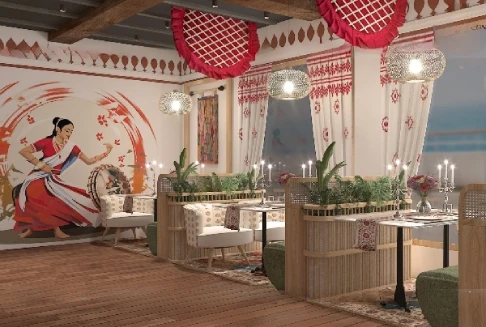
Image credit: Ceebee Design Studio
We designed this cafe in Bangalore in the English Country style, blending vintage charm with floral elegance. Soft pastel tones, carved wooden furniture, and whimsical wall decor create a cozy, romantic vibe. Hanging birdcages, exposed brick walls, and curated accents make it both welcoming and picture-perfect. It’s a space designed to slow down and soak in the charm.
English Country Style
Warm pastels, floral upholstery, wooden trims, and vintage chandeliers. Perfect for romantic, sit-down cafes with a slower pace.
Industrial
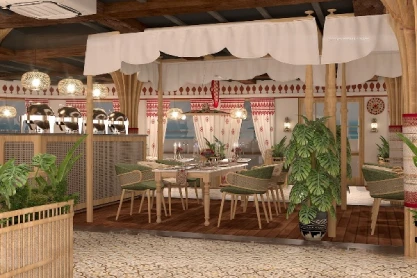
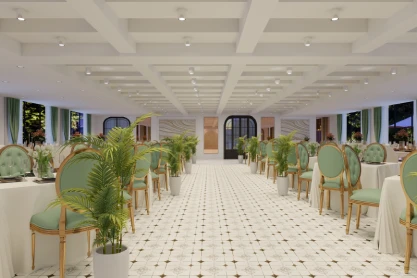
Image credit: Ceebee Design Studio
Unfinished textures..exposed brick, raw concrete, metal frames. This style works particularly well for urban locations or youth-focused cafés.
Bohemian
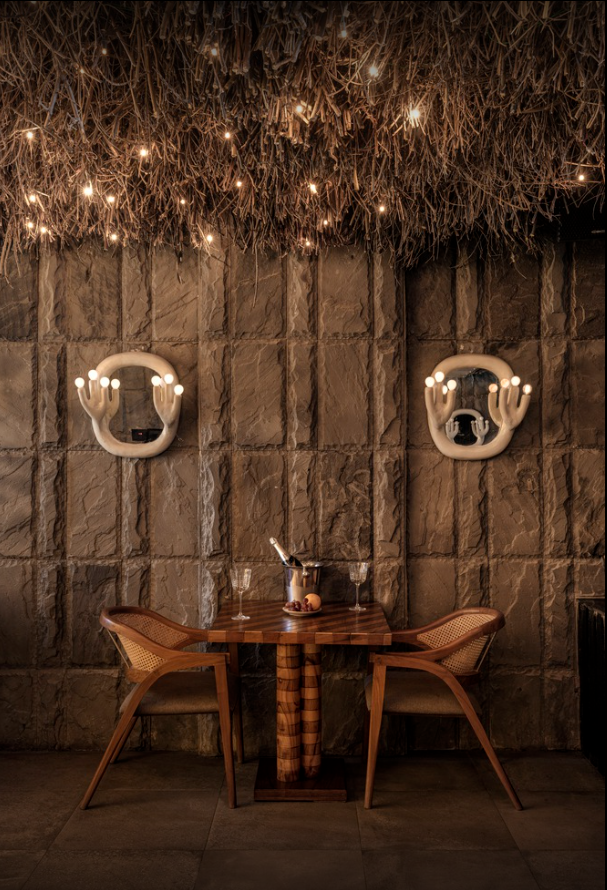
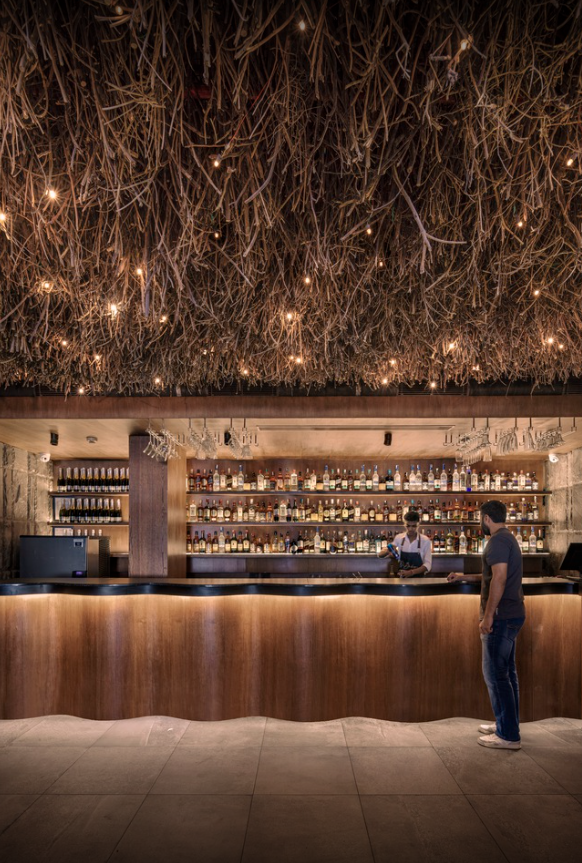
Image credit: archdaily
Bodega Restaurant by Loop Design Studio, located in Panchkula, designed in bohemian style, merges modern minimalism with raw, earthy charm. The space features exposed materials, handcrafted textures, and lush greenery that blurs the line between indoors and outdoors. Its open, grounded design creates a warm, slow-living atmosphere ideal for relaxed dining.
Patterned rugs, cane chairs, macrame hangings, indoor plants…casual, expressive, and cost-effective if done right.
Scandinavian
Minimalist lines, soft neutral tones, and natural wood. Ideal for spaces that want to feel open, breathable, and WFH-friendly.
Contemporary Modern
Sleek finishes, modern furniture, accent lighting, and clean materials like back-painted glass and PU-finish woodwork. Best suited for city cafes with upscale clientele.
Tropical or Mediterranean
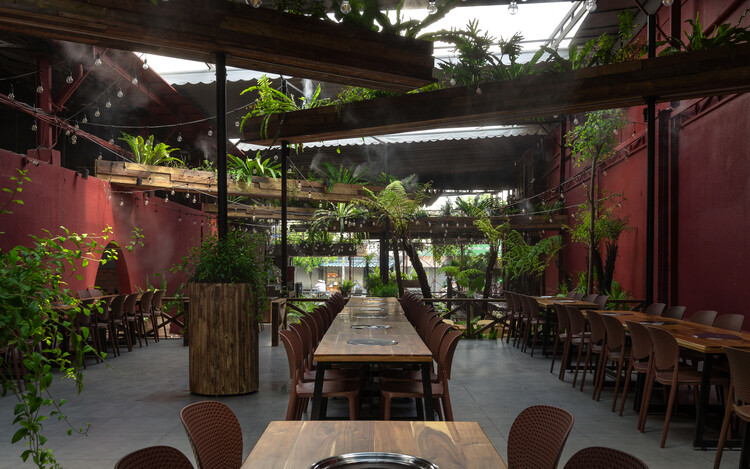
Image credit: archdaily
Terrazzo floors, arched doorways, rattan furniture, and breezy whites. These styles are gaining popularity in coastal towns and resort cafes.
Planning the Space: What Comes First?
Effective cafe interiors rely heavily on planning before execution. Some critical questions that shape the design journey:
- What’s the total carpet area, and how much of it needs to be used for customers?
- What’s the seating capacity target?
- Is the build modular or customized?
- What is the tentative budget for interiors?
- Will the café need zoning (smoking/outdoor/quiet zones)?
- How important is branding as a physical design element?
An efficient layout considers service flow, seating density, acoustics, lighting layers (ambient, task, accent), and natural light use. In some recent projects, using perforated partitions and dual-purpose counters helped reduce clutter and open up compact cafes.
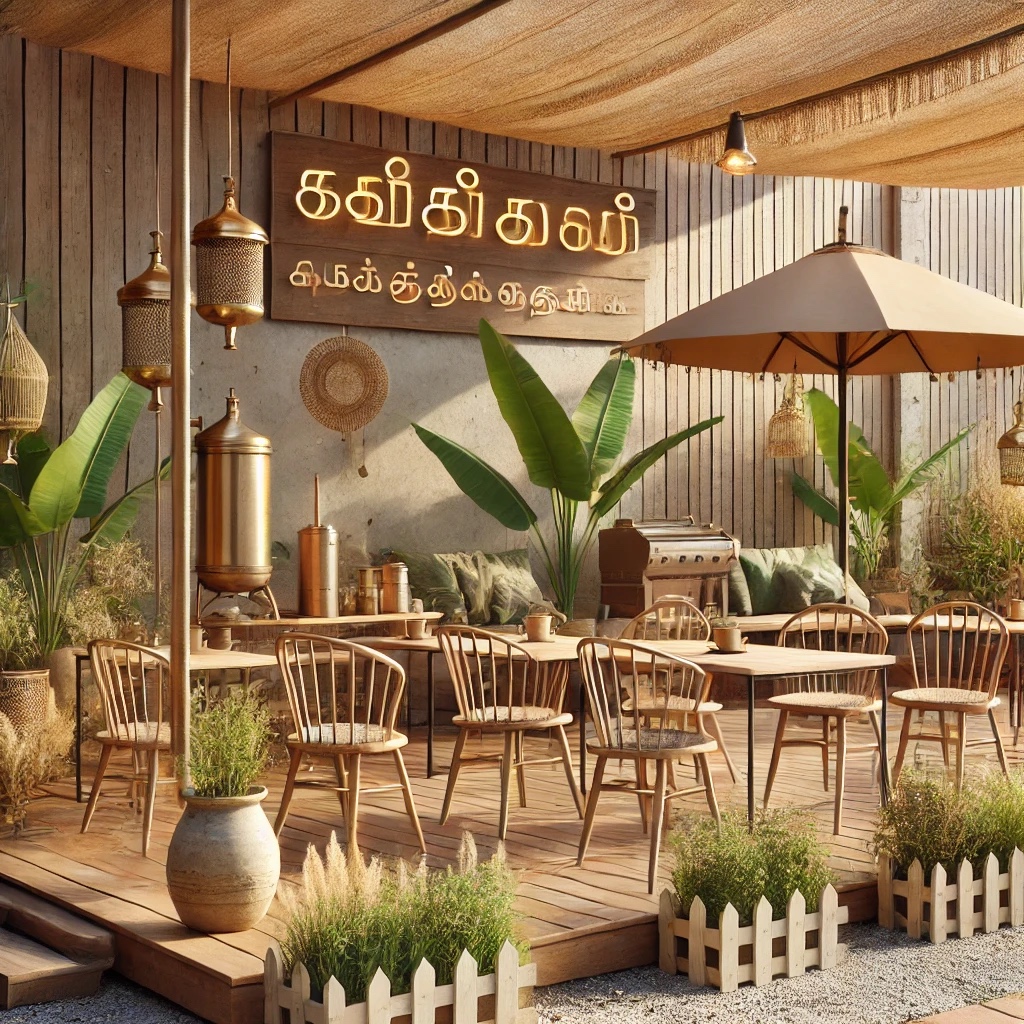
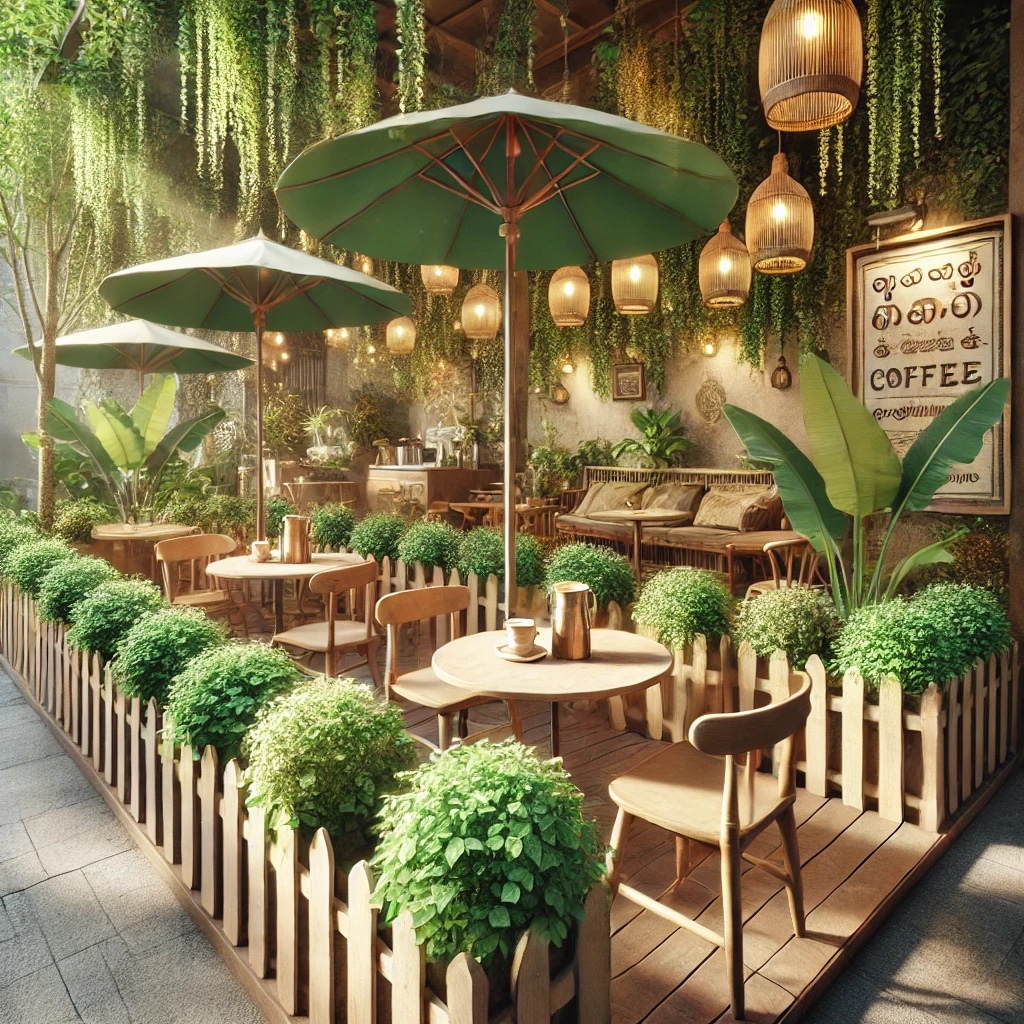
Budgeting for Cafe Interiors
While budgets vary based on materials and size, a starting point can help clients plan:
- For a 300 to 500 sqft. cafes using basic laminate finishes, budgets generally start from ₹8 to 10 lakh.
- A 1200 to 1500 sqft. cafes using a combination of laminate, PU can range from ₹18 to 25 lakh depending on customization.
This typically includes ceiling, lighting, flooring, furniture, painting, branding, and decor elements. Kitchen appliances, HVAC etc depend on the clients and are not considered in the interiors budget.
The Process: From Concept to Execution
While each design team may follow its own workflow, the steps are generally structured around the following:
- Site Study & Requirement Analysis
Understanding the cafe concept, space potential, and target clientele. - Moodboards & Concept Presentation
This includes design style, sample materials, color palettes, and inspiration references. - Initial Estimate
A ballpark cost based on assumed finishes and quantities to align expectations early. - Layout & Zoning Plan
Seating capacity, counter placement, storage, entry points, and service areas. - Detailed Design & Selections
Furniture detailing, material finalization, lighting specs, and brand signage mockups.
Execution Support
Coordinating with vendors and site teams for smooth execution, quality control, and timeline tracking.
Before You Hire a Designer
For anyone planning to open a cafe, having clarity before approaching a designer speeds up the entire process. Here are a few things to sort beforehand:
- Define your concept clearly. Is it a cafe plus a bookstore? A cafe with live events? A grab-and-go coffee cart?
- Identify your audience. Who is this space for? Office-goers, artists, students, tourists?
- Save references. Pinterest boards, Instagram saves, or even photos of cafes you’ve visited, these visual cues help designers understand your preferences better.
- Set a timeline. Be realistic and transparent about deadlines and opening dates.
- Know your must-haves. Whether it’s an outdoor seating area, a specific type of light fixture, or your brand color palette, listing these early avoids confusion later.
Real Talk: Your Cafe Should Feel Like the Vibe You’re Selling
A cafe isn’t just tables and coffee…it’s mood, it’s energy, it’s storytelling. Think about it: ever walked into a plant-filled corner cafe and instantly felt calm? Or seen a neon-pink wall with iced lattes and thought, “Yep, this is going on my Insta”?
That’s not by accident. Interiors set the tone before the coffee even hits the table. A cozy book cafe needs more than books, it needs corners you can melt into. A city takeaway joint needs bold colors, strong branding, and lighting that makes your coffee look good on camera. A floral cafe? It better smells like lavender and feels like a Pinterest irl.
Designing right means knowing who you’re serving and what they’re looking for…peace, content, hustle breaks, or date spots.
At the end of the day, people don’t just come for the coffee.
They come for the vibe.
Design it like it matters, because it does.
FAQs:
- Do I need to have a concept before hiring a designer? Not necessarily. But having a rough idea, mood board, or even a few Pinterest references really helps. Designers assist in developing the concept into a functional layout and aesthetic.
- Can my café be both functional and Instagrammable? Absolutely. A good design balances visual appeal with utility. Smart zoning, lighting, and thoughtful furniture choices can make your space look great and work great too.
- What are some popular styles for café interiors? Styles vary depending on brand identity and location. Popular ones include English country style, industrial, contemporary modern, minimal Scandinavian, rustic, and theme-based designs like pirate, floral, or pet cafés.
- What if my café is part of a franchise or chain? Designs for chain cafés usually need to follow brand guidelines and standard operating procedures (SOPs). However, they can be localized to suit the space and customer expectations.
- Can I include a smoking zone or outdoor seating? Yes. But it depends on the property layout and local regulations. Designers help plan ventilation, zoning, and access without disrupting the overall flow of the café.
- Will the designer help with branding elements too? Most interior designers collaborate with branding teams or offer branding support—from logo placement, signage, and menu board styling to social-media-friendly wall features.
- What should I prepare before starting the design process? Have clarity on your budget, business model (takeaway vs dine-in), target audience, and any functional needs (storage, kitchen layout, etc). Save inspiration images and be upfront about your timelines.
- How do I make sure the design reflects my café’s personality? The best café designs tell a story. Communicate your values, vibe, and vision early on. The more your designer knows about your brand, the better they can translate it into spatial design.
Follow us on:
About us
CeeBeeDesignStudio is a top-tier interior design consultancy, excelling in Interior Decoration and Turn Key Execution of Interior Works. With a strong presence in Kolkata and Bangalore, we have transformed over 1000+ residential projects and 300+ commercial spaces. Our team’s commitment to excellence and innovation ensures a remarkable design experience for every client.
 Embracing Kerala Style Interior Design: A Timeless Blend of Heritage and Elegance
Embracing Kerala Style Interior Design: A Timeless Blend of Heritage and Elegance What makes an Interior Truly Eco Friendly?
What makes an Interior Truly Eco Friendly?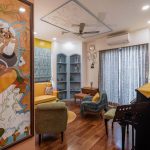 Boho Interior Designer: How to Hire the Perfect Expert for Your Dream Space
Boho Interior Designer: How to Hire the Perfect Expert for Your Dream Space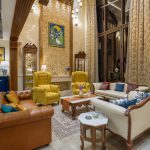 Turnkey Interior Design : Seamless, Stress-Free, and Stunning Solutions
Turnkey Interior Design : Seamless, Stress-Free, and Stunning Solutions The Art of Bungalow Interior Design
The Art of Bungalow Interior Design
Enter Your Details
About Us
CeeBeeDesignStudio is one of the fastest growing interior execution companies. Currently we have very strong presence in Bangalore, Goa, and Kolkata. Our motto is to keep the clients requirement and budget in mind and give a qualitative result on time.
Quick Link
Contact Info
- Door No-18, 3rd B Cross, Domlur II Stage, Bangalore 560071
- +91 8697306015
- chitralekha@ceebeedesignstudio.com
Contact Info
- 3045 Rajdanga main road, Kolkata, West Bengal 700107
- +91 8697306015
- chitralekha@ceebeedesignstudio.com
- Copyrigt © 2025 CeeBeeDesignStudio Pvt. Ltd
